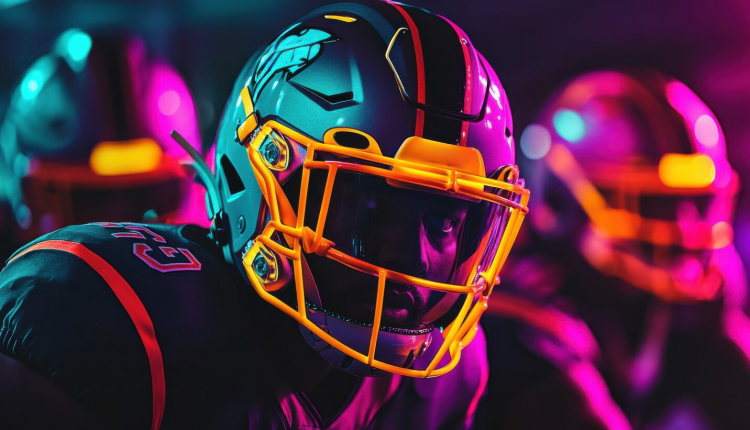Minnesota Vikings Purple People Eaters: Defense Legends and “Skol” Chant Origins
Minnesota Vikings Purple People Eaters still strike fear into football fans whenever classic NFL defenses are discussed. Anchoring the Vikings in the late 1960s and 70s, this legendary defensive line of Alan Page, Carl Eller, Jim Marshall, and Gary Larsen became known for their mantra: “Meet at the quarterback.” Their dominance carried Minnesota to four Super Bowl appearances, even though a Lombardi Trophy eluded them. Today, their legacy remains the gold standard for defensive toughness and team chemistry.
Why does this matter? Because football culture is built on legends and traditions. The Vikings’ defensive dominance created a national identity for the franchise, while the modern “Skol” chant echoes that same spirit in U.S. Bank Stadium today. From betting markets that see Minnesota as a defensive-minded team, to fantasy football conversations about historic IDPs, the Purple People Eaters remain woven into NFL history. Pair that with the thunderous “Skol” chant, inspired by Nordic tradition and now one of the NFL’s most viral stadium celebrations, and you have a franchise where past and present unite in unforgettable ways.
This article explores the Vikings’ Purple People Eaters defense, their unforgettable plays, and how the Skol chant emerged to become one of the NFL’s most recognizable fan rituals. We’ll highlight stats, stories, and culture that define Minnesota’s football identity.
The Rise of the Purple People Eaters
The Purple People Eaters defense emerged in the late 1960s under head coach Bud Grant. Built on discipline, aggression, and unity, the line became unstoppable. Their nickname, coined by fans and sportswriters, reflected both their purple uniforms and their ferocity on the field.
| Player | Position | Career Sacks |
|---|---|---|
| Alan Page | DT | 148.5 |
| Carl Eller | DE | 133.5 |
| Jim Marshall | DE | 127 |
| Gary Larsen | DT | 38.5 |
Together, they anchored a defense that consistently ranked among the NFL’s best, carrying Minnesota to 10 division titles and four NFC championships between 1969 and 1976.
Alan Page: MVP and Hall of Fame Dominance
Alan Page became the face of the unit, winning NFL MVP in 1971 — a rare feat for a defensive player. His relentless motor and intelligence disrupted offenses, earning him nine Pro Bowls and eventual enshrinement in Canton. Page later became a Minnesota Supreme Court justice, cementing his legacy both on and off the field.
Carl Eller and Jim Marshall: Relentless Edge Rushers
Carl Eller, known as “Moose,” terrorized quarterbacks with his length and strength, while Jim Marshall, the ironman of the group, set an NFL record with 282 consecutive starts. Their pressure from the edges forced turnovers and fueled Minnesota’s defensive dominance. Together, they embodied the Vikings’ grit and discipline.
The Skol Chant: Origins of a Viking Tradition
The modern “Skol” chant is rooted in Scandinavian culture, where “skål” means “cheers” or “good health.” The Vikings adopted it as a rallying cry, but it wasn’t until the opening of U.S. Bank Stadium in 2016 that the chant reached its current iconic status. With the help of Icelandic soccer fans, the Vikings introduced a drum-led chant that reverberates through the stadium before every kickoff.
| Element | Description |
|---|---|
| Drum Beat | Sets the rhythm, led by a Vikings legend or guest |
| Claps | Fans clap overhead in unison |
| Shout | “Skol!” echoes through the stadium |
The chant went viral, spreading across social media and becoming one of the NFL’s most recognizable pregame rituals.
Vikings Super Bowl Appearances and Heartbreak
Despite the Purple People Eaters’ dominance, Minnesota lost all four of its Super Bowl appearances in the 1970s. Still, their presence on those grand stages cemented their legacy as one of the most feared defenses ever. For bettors, the Vikings became synonymous with low-scoring, defensive battles. For fans, heartbreak became part of the lore, deepening their loyalty.
Legacy of Defense and Fan Culture
The Minnesota Vikings Purple People Eaters influenced future defenses, inspiring aggressive units like the Bears’ 1985 defense and the Ravens’ 2000 dominance. Meanwhile, the Skol chant unites modern fans in the same spirit of intimidation that the Purple People Eaters once brought to opponents.
| Tradition | Significance |
|---|---|
| Skol Chant | Unites fans before every kickoff |
| Horn Blowing | Signals the start of the chant and team intros |
| Purple Friday | Fans wear purple every Friday before games |
Why the Purple People Eaters and Skol Endure
The story of the Minnesota Vikings Purple People Eaters and the Skol chant proves that legends never fade. The defense created an identity that shaped the franchise’s past, while the chant connects modern fans to that same spirit of dominance and unity. Both embody toughness, tradition, and loyalty — the core of Vikings football.
From Page’s MVP season to the thunder of the Skol chant, the Vikings’ legacy continues to inspire new generations of fans who bleed purple and gold.

